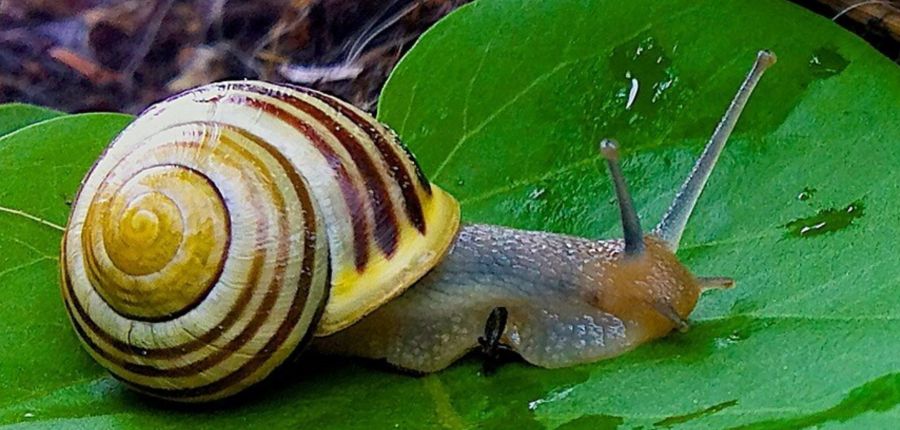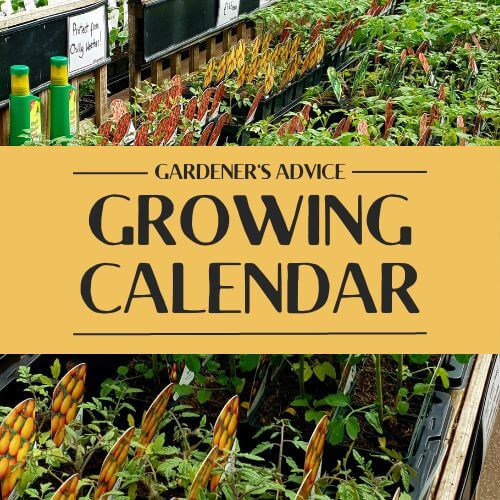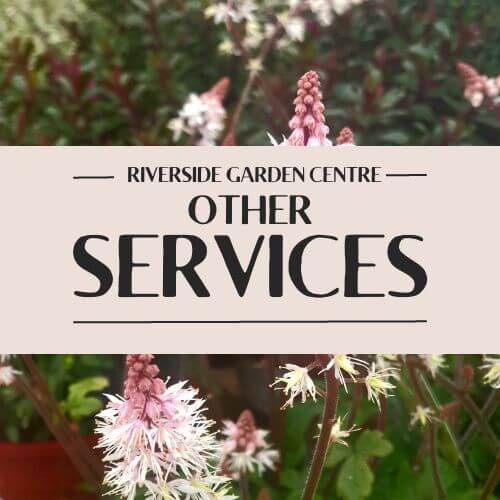Dealing with Slugs and Snails
Posted By: Hugh Forbia Category: Growing Veg, Pests and Diseases, WildlifeSlugs, Snails and Gardeners
Slugs and snails are the bane of the gardener’s life. They seem to lie in wait until the first green shoots appear….or the moment when you have finished planting your display of beautiful bedding plants - and then attack! The tell-tale signs are slimy trials across the surface of the soil and holes eaten in leaves. If conditions are right, slugs and snails can demolish a whole plant in a very short time. They love damp conditions and are especially active after a spell of rain.
Slug or snail?
Does it matter? Both are a nuisance to keen gardeners! You can tell the difference by checking the type of damage caused and where it occurs. Both leave slimy trails, but snails are great climbers, so if the plants in your favourite hanging basket are being eaten, it’s probably a snail at work. Snails are also choosy eaters, preferring the softer tissue between leaf ribs. If you spot the skeleton remains of a plant leaf, you know that a snail is the culprit. Slugs tend to operate at ground level and lurk in damp, shady places.
TOP TIPS
- Mulch Mulch Mulch! The best thing is using mulch, gravel and bark around your plants as slugs and snails can’t move on the dry surfaces. They also will avoid crossing scattered eggshells, straw, ash from wood fires (only use small amounts) and coffee granules. Wool pellets act in the same way as well as adding in nutrients to your soil.
- Cloches and copper tape can help protect potted plants from intruders.
- Alternatively, attract slugs and snails using homemade ‘beer traps’. A cup of stale beer with a stone mostly covering the top will attract and trap them for you to remove later.
- Protect fresh new buds and young plants as they are vulnerable to be munched. Once established, they’ll be out of reach.
- Go out and look, removing them when you see them. They love damp conditions and are especially active after a spell of rain. First thing in the morning and in evenings are also good times to hunt for slugs!
- Encourage other wildlife to your garden. Birds, frogs, toads and hedgehogs are natural predators and will benefit the biodiversity in your garden.
As a general rule, choose plants that are/have:
- Woody Shrubs
- Established Plants
- Spikey Plants
- Silver Foliage
- Hairy Leaves
- Aromatic Leaves
- Hardy
A few ways to protect your plants
A liberal scattering of plug pellets may seem the obvious solution, but many gardeners prefer to use more environmentally-friendly methods:
Ash. Wood ash or cinders make a good protective barrier round plants, but avoid direct contact with the foliage. The barrier needs to be continuous and at least 5cm wide.
Beer traps. Sink a small plastic pot into the soil and half fill with stale beer. Cover with a flat stone or similar. Slugs are attracted by the smell of stale beer, fall in and drown. Commercially made beer traps are available.
Copper tape. Self-adhesive tape can be wrapped around larger pots. A cheaper version of solid copper rings can be made by cutting a ring of plastic from a discarded flower pot and wrapping copper tape round it.
Egg shells. Crushed egg shells create a jagged barrier which slugs and snails seem reluctant to cross. The decomposing shells work as a soil improver.
Hunt-the-slug. Work out where all the hiding places loved by slugs and snails are in your garden. Create the right conditions: damp, cold and shady, using old tiles, rotting timber, wet newspaper etc. —then round up and dispose of the pests.
Hand picking. A sure way to clear your garden of slimy pests - you’ll be amazed how many you collect. Ensure to wear gloves for this task. Work out where all the hiding places loved by slugs and snails are in your garden. Create the right conditions: damp, cold and shady, using old tiles, rotting timber, wet newspaper etc. —then round up and remove the pests.
Nematodes. Naturally-occurring micro-organisms which are slug parasites and are present in most organic garden soils. ‘Nemaslug’ is a commercially available way of introducing nematodes to protect a specific area of your garden from slug or snail damage.
Sand or grit. Another form of protective barrier. Decorative grits and gravels are also used to show off plants to best advantage.
Slug pellets. Various brands of environmentally-friendly pellets are now readily available.
Spiky plants. After pruning, place spiky or thorny cuttings round your plants—a great way to deter cats too!
Wool pellets. A fairly recent introduction to the commerial market, these take advantage of molluscs dislike of the wools texture and create a fibrous barrier that they won't cross. Plants need to be surrounded by the pellets that expend during wet weather and create a mat around your plant.
Please ring or fill out a customer enquiry form if you would like to know if we have a product in stock.
Slug and snail resistant plants
The following plants are known for their resistance to attack from slugs and snails (No guarantees!)
· Acanthus mollis (Bear’s Breeches)
· Achillea filipendulina (Yarrow)
· Agapanthus - hybrids and cultivars (African Lilly)
· Alchemillia mollis (Lady’s Mantle) *
· Anemone hupehensis and A.x hybrid *
· Antirrhinum majus (Snapdragon)
· Aquilegia species (Columbine) *
· Armenia species (Thrift)
· Aster amellus, A.x frikartiiand, A. novae-anliae (Michaelmas Daisy)
· Astilbe x arendsii *
· Bergenia (Elephant’s Ears)
· Centaura dealbata and C. montana (Cornflower)
· Corydalis lutea
· Cynara cardunculus (Cardoon)
· Dicentra spectabilis (Bleeding Heart) *
· Digitalis purpurea (Foxglove)
· Eryngium species (Sea Holly) *
· Euphorbia species (Spurge) *
· Foeniculum vulgare (Fennel) *
· Fuchsia cultivars *
· Gaillardia aristata (Blanket Flower)
· Geranium species (Crane’s Bill) *
· Geum chiloense (Avens)
· Hemerocallis cultivars (Day Lily) *
· Liatris spicata (Gay Feather)
· Lysimachia punctate (Loosetrife)
· Myostis species (Forget-Me-Not)
· Nepeta x faassenii (Cat Mint)
· Papaver nudicaule and P. orientale (Poppy)
· Pelargonium (‘Geranium’) *
· Phlox paniculata
· Ornamental grasses and sedges *
· Physostegia virginiana (Obedient Plant)
· Polemonium foliosissimum (Jacob’s Ladder)
· Polygonum species (Knotweed)
· Potentilla hybrids and cultivars (Cinquefoil)
· Pulmonaria species (Lungwort) *
· Rudbeckia fulgida (Cone Flower)
· Salvia x superba (Sage)
· Saxifraga x urbium (London Pride)
· Scabiosa caucasica (Scabious)
· Sedum spectabile (Ice Plant)
· Sempervivum species (House Leek) *
· Sisyrinchium species (Pigroot)
· Solidago species (Golden Rod)
· Stachys macrantha (Lamb’s Ears) *
· Tanacetum coccineum
· Thalictrum aquilegiifloium (Columbine Meadow Rue)
· Tradescantia virginiana (Spiderwort)
· Tropaeolum species (Nasturtium) *Verbascum species (Mullein)
* denotes self-seeding plants
Slug and snail resistant vegetables
Slugs love vegetables - especially tasty young plants! Try the following which seem not to attract slugs as much as others:
· Winter brassicas: Kale, Sprouts, Cauliflower, Spring Cabbage
· Potatoes: Pentland Dell, Pentland Ivory, Pentland Squire, Pentland Falcon, Desiree
· Lettuce - red and ‘cut-and-come-again’ varieties
· Garlic







